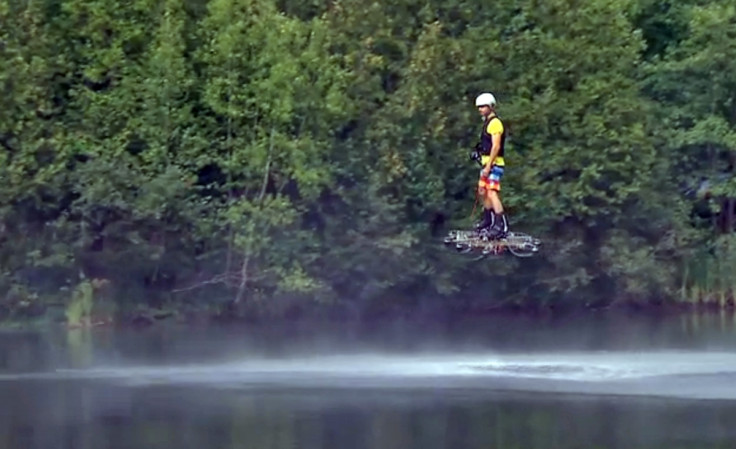Omni Hoverboard: Canadian inventor still refining his Guinness Record-breaking flying propeller device

Back to the Future Day is almost upon us, but the inventor of the Omni Hoverboard, which looks most similar to the infamous film invention, is still testing improved prototypes of his record-breaking futuristic device.
In the past few years leading up to 21 October 2015, which is the date that Marty McFly travels to with Dr Brown in the cult film Back to the Future II, innovators have stepped up efforts to create real working hoverboards to rival the technology, such as the crowdfunding-born Hendo Hoverboard and the Lexus Hoverboard.
Just to be clear: We don't mean those little segway scooter things that were recently banned by UK police – they're definitely not hoverboards.
The Hendo works using magnetics and can only be used in a special purpose-built conductive rink, while the Lexus uses superconductors and magnets that work against gravity to lift the board, as liquid nitrogen cools the superconductors, giving off steam off the sides of the board.
Neither of these designs goes very far off the ground, and arguably the most exciting invention of all is the Omni Hoverboard, which broke the Guinness World Record for longest distance travelled by a hoverboard in May 2015 when it flew a distance of 905ft at a height of 16ft in the air, in just 1.5 minutes.
Canadian inventor Catalin Alexandru Duru, 31, is understandably very secretive about his invention as it is still patent-pending, but careful watching of a recent TV package by CBC News has revealed a few interesting details.

The Omni Hoverboard features eight propellers and a frame made from carbon fibre. The motors controlling the propellers are powered by 12 lithium polymer batteries, which generate around 40 horsepower, but sadly, this currently generates a combined flying time of only 1.5 minutes.
Acceleration is achieved by squeezing a joystick made from a pair of pliers which makes the hoverboard go higher or lower, and speed up or slow down. The user is securely anchored to the hoverboard using snowboard binding straps, steering the board by physically turning in the air to change its direction.
"I saw how technology was evolving – you can make something like that today and it's actually possible, so I thought, 'Why not?'" Montreal-based Duru told CBC News.
The Omni Hoverboard is expected to be released in 2017, and from watching the CBC News video, it's clear why – prototypes of the invention are still being improved and its teething problems with circuits and propellers not responding are still a problem. However, when it comes to giving us the hoverboard Back to the Future fans have been dreaming about for 26 years, the Omni could be our best bet.
© Copyright IBTimes 2025. All rights reserved.






















